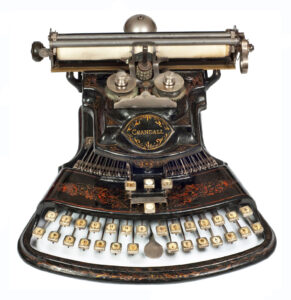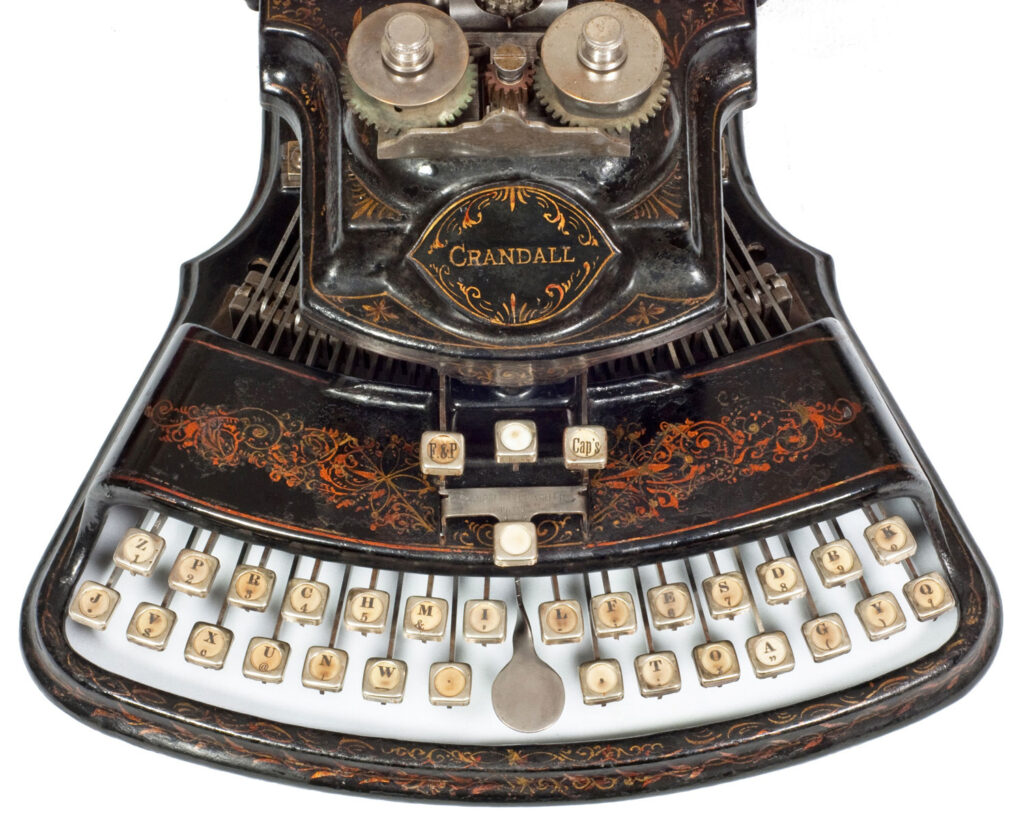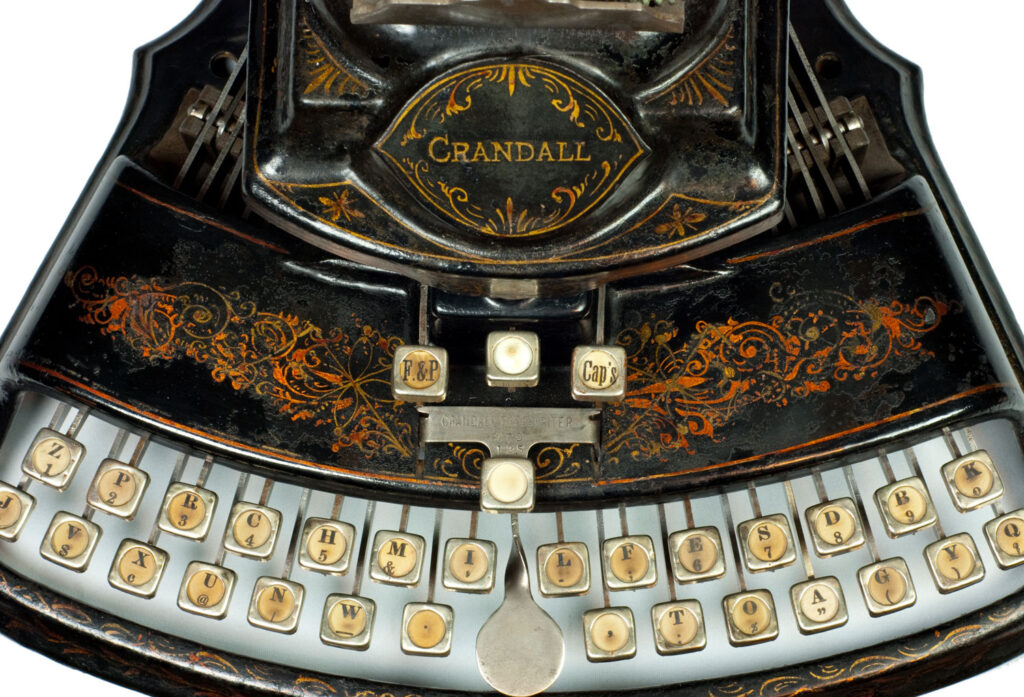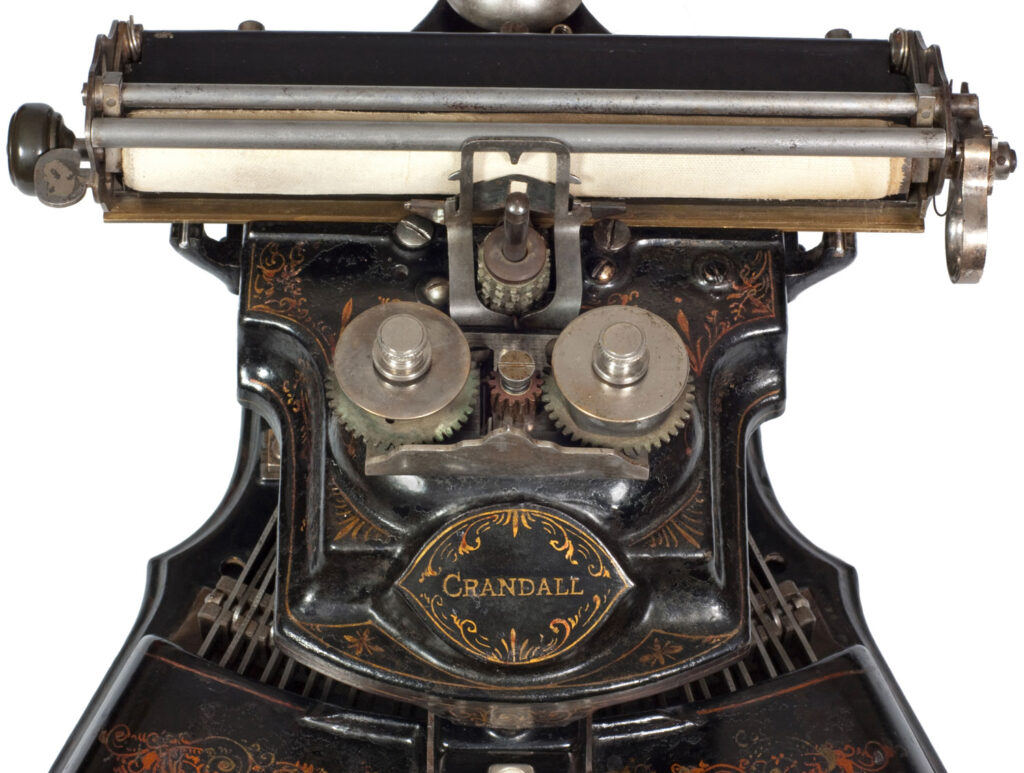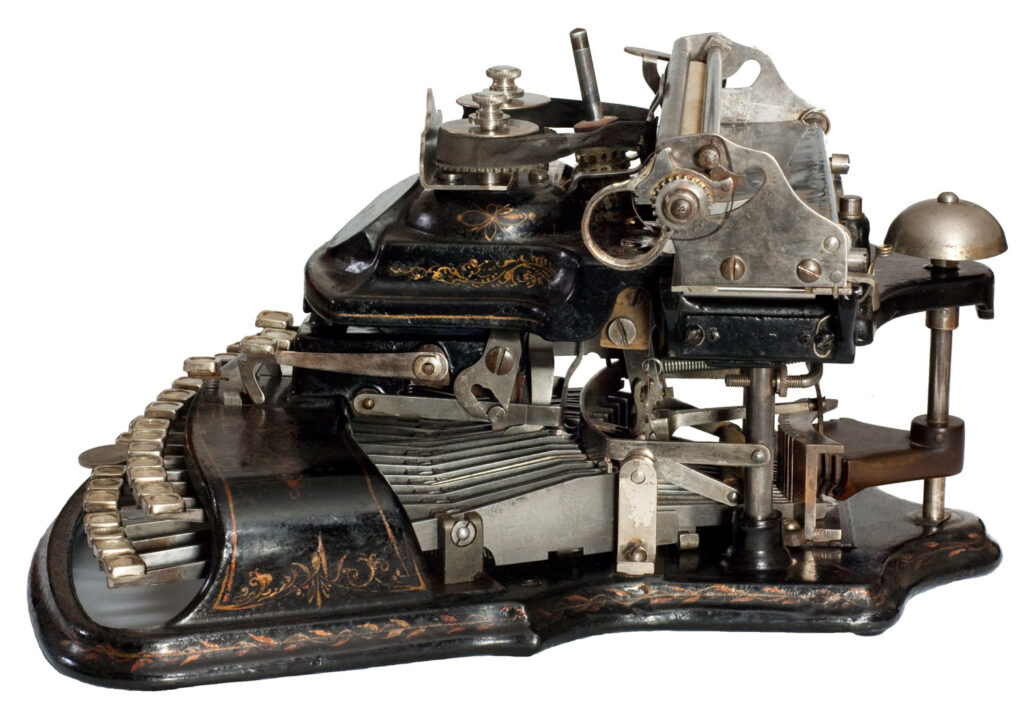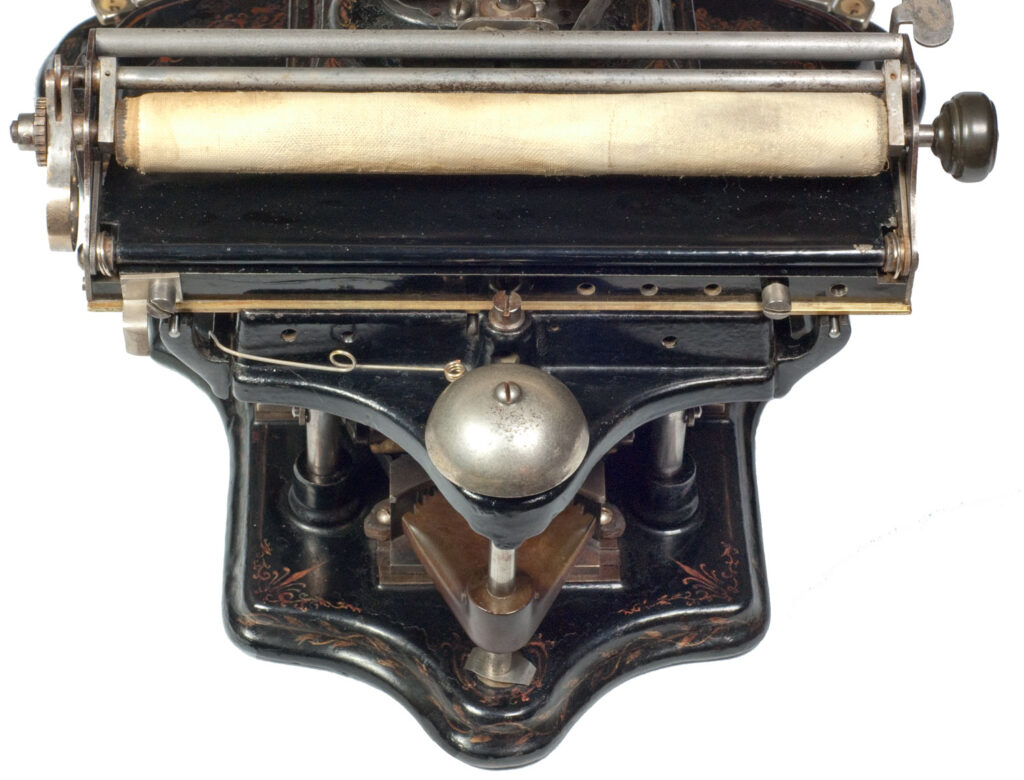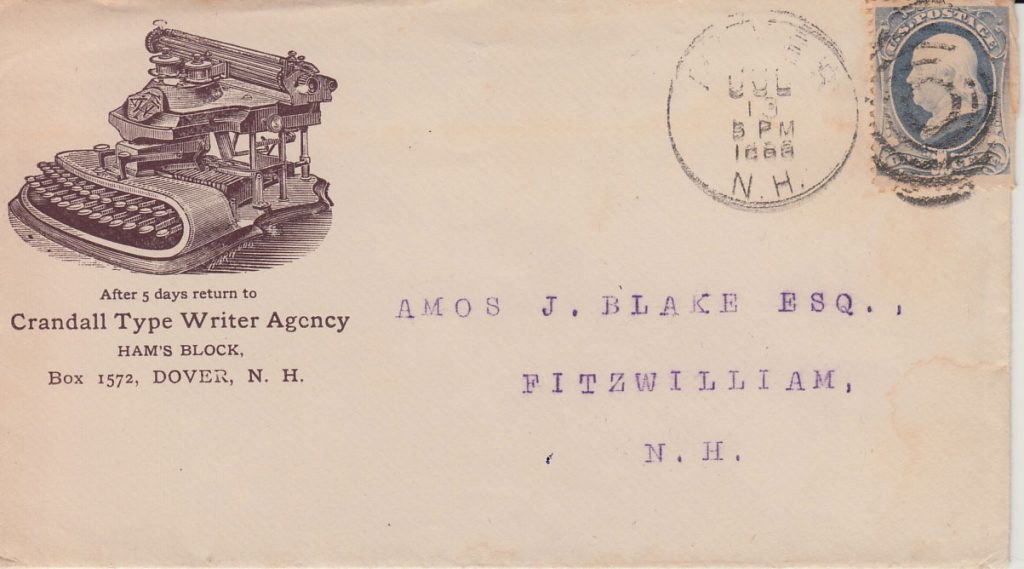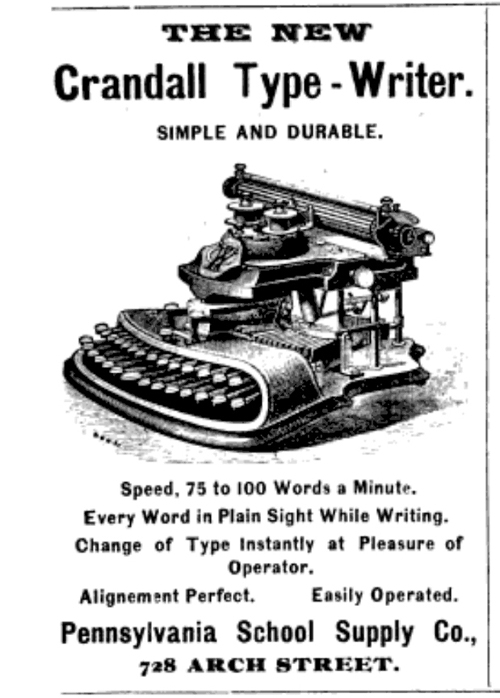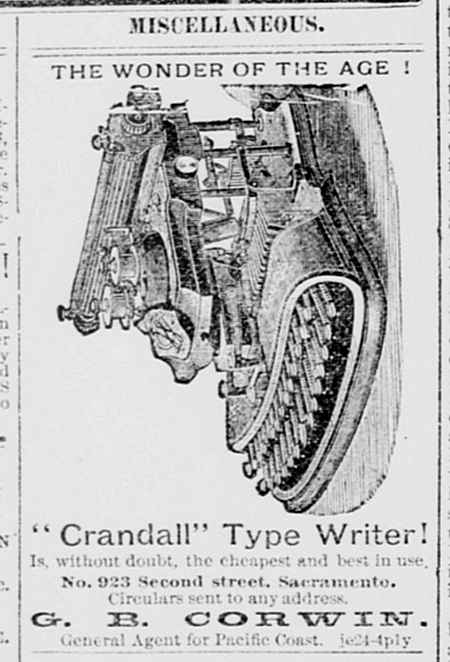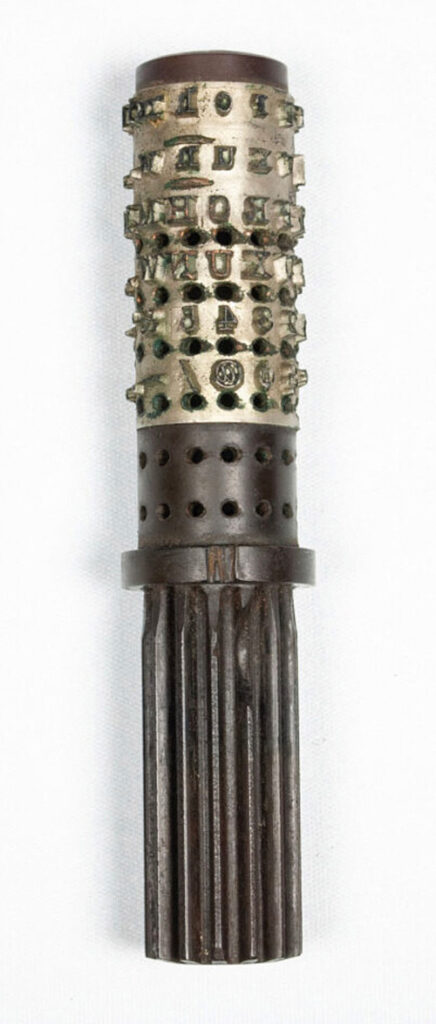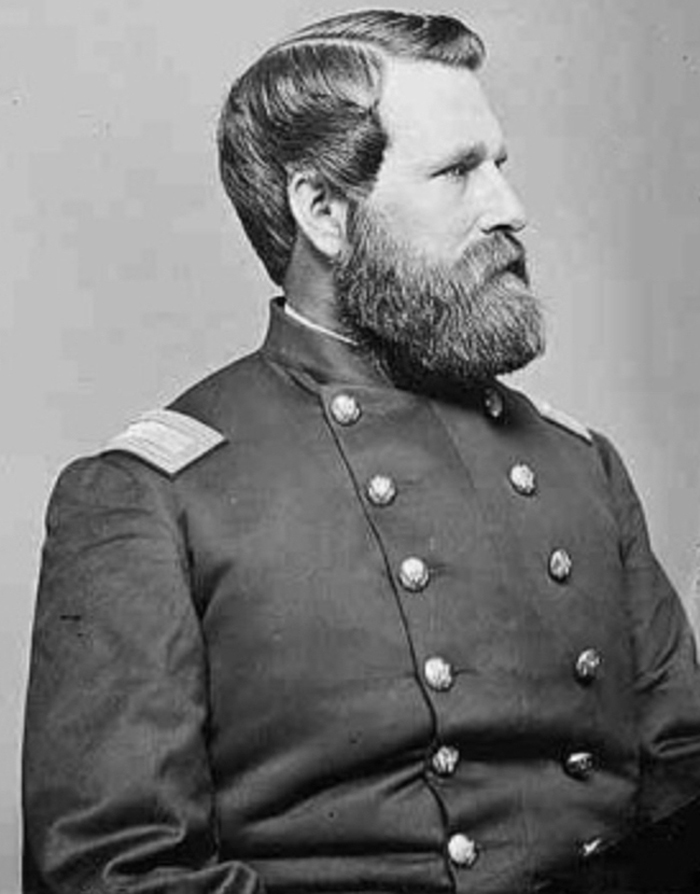‘The Crandall We Never Knew’ – An illustrated article
This beautiful Crandall 1 features a rich, hand-painted Baroque-style decoration (see close-up below), with square, nickel-rimmed glass keys. With serial number 125, it is the second earliest known Crandall 1. Remarkably, each Crandall 1 is uniquely decorated.
As the first Crandall brochure proudly states, “The Crandall Type-Writer is radically unlike other writing machine[s].” It holds its place in history as the first commercially successful typewriter with a single type element, or “type-sleeve,” as its inventor, Lucien S. Crandall, called it. The type-sleeve (see image below) is a cylindrical mechanism about the size of a finger that rotates and rises into position before striking the platen. With two shift keys, 84 characters could be typed using only 28 keys. The type-sleeve is easily removable, allowing for a change of font style. As the period brochure states, “It has an interchangeable type-scheme whereby THE SAME MACHINERY MAY be made to print a number of styles of letters, the change from one style to another being made in few seconds.” A selection of type-sleeves was available for $3.00 each.
Another notable feature of the Crandall 1 is its pioneering use of proportional spacing, adjusting the carriage movement to accommodate varying character widths. The brochure describes this innovation: “This machine embodies a peculiar spacing device which causes each letter to take its proper space upon the paper, giving to its work the appearance of ordinary printing.” To achieve this, the carriage advances either 2, 3, or 4 spaces, depending on the character width. Other early examples include the Columbia 1 (patented 1886) and the Automatic (patented 1887), both of which can be seen in this collection.
The Crandall 1 also introduced another landmark innovation: visible writing. For the first time, typists could see their work as they typed, though the most recently struck three or four characters remained hidden until the carriage moved them into view from behind the ribbon.
A notable historical detail—the @ symbol made its first appearance on a typewriter keyboard with the Crandall 1, placed on the U key.
Lucien S. Crandall, born in 1844, was one of the great early typewriter pioneers. His designs are ingeniously crafted, each reflecting his mechanical brilliance. The Crandall 1, his first commercially successful typewriter, debuted in 1883. An 1886 account from The Inland Printer magazine recounts the company’s early struggles:
“With great hopes, founded on most encouraging inquiries, plans were laid for manufacture at Blodgett Mills, New York, and a few machines were built, when fire destroyed the factory and necessitated a start again almost from the beginning.”
It remains uncertain whether the Crandall 1 was produced in Blodgett Mills or if it was the earlier three-bank Crandall (patented in 1881) that was manufactured there. The only known example of the three-bank Crandall resides in the Smithsonian.
After the fire, production resumed in Syracuse, New York, just 35 miles north, where Crandall 1 typewriters were manufactured from 1883 to 1886. In 1887, the factory moved to Groton, New York, where Crandall 1s were made for an additional four or five months before production shifted to the Crandall New Model.
Other Notable Features
- The platen on this Crandall is tightly wound with a white canvas-like material, whereas other Crandall 1s have white rubber platens. This may suggest factory experimentation with different coverings, possibly to reduce typing noise, or it may have been a special-order feature.
- The white key between the two shift keys causes the ribbon guide to drop down, revealing the most recently typed character.
- The platen releases from its typing position and swings back, allowing for easy insertion of paper from directly above the carriage.
- The ornately shaped metal piece in front of the ribbon spools shifts from side to side, reversing the ribbon’s direction as needed.
The only known photograph of Lucien S. Crandall is shown below. ‘He enlisted with the 109th New York Volunteer Infantry Regiment on August 27, 1862. He was still 18. He served as a private for the last two years and nine months of the American Civil War, surviving 12 major battles (all in the last 11 months of the conflict) without injury.’ (OZ Typewriter)
“The wonder of the age, Crandall Type-Writer!”
“It is small, light, and handsome instrument, which may be operated on one’s lap or any convenient desk or table with the greatest ease”
